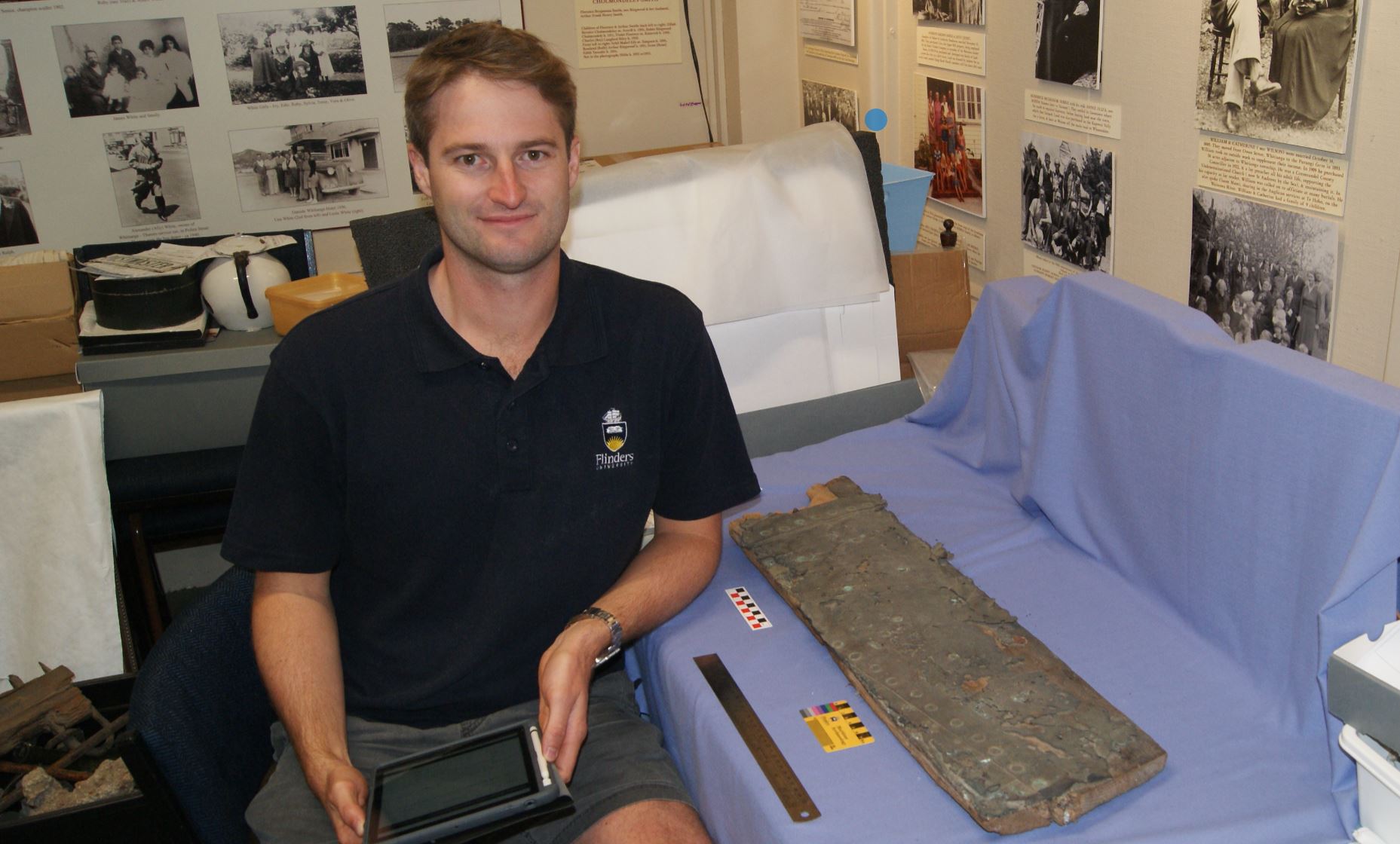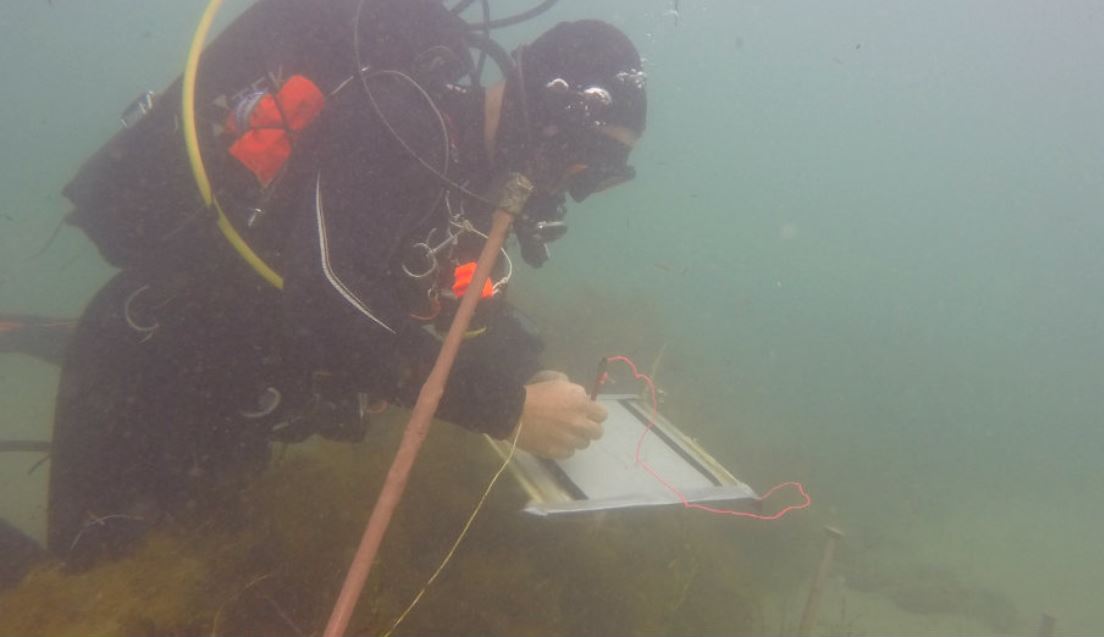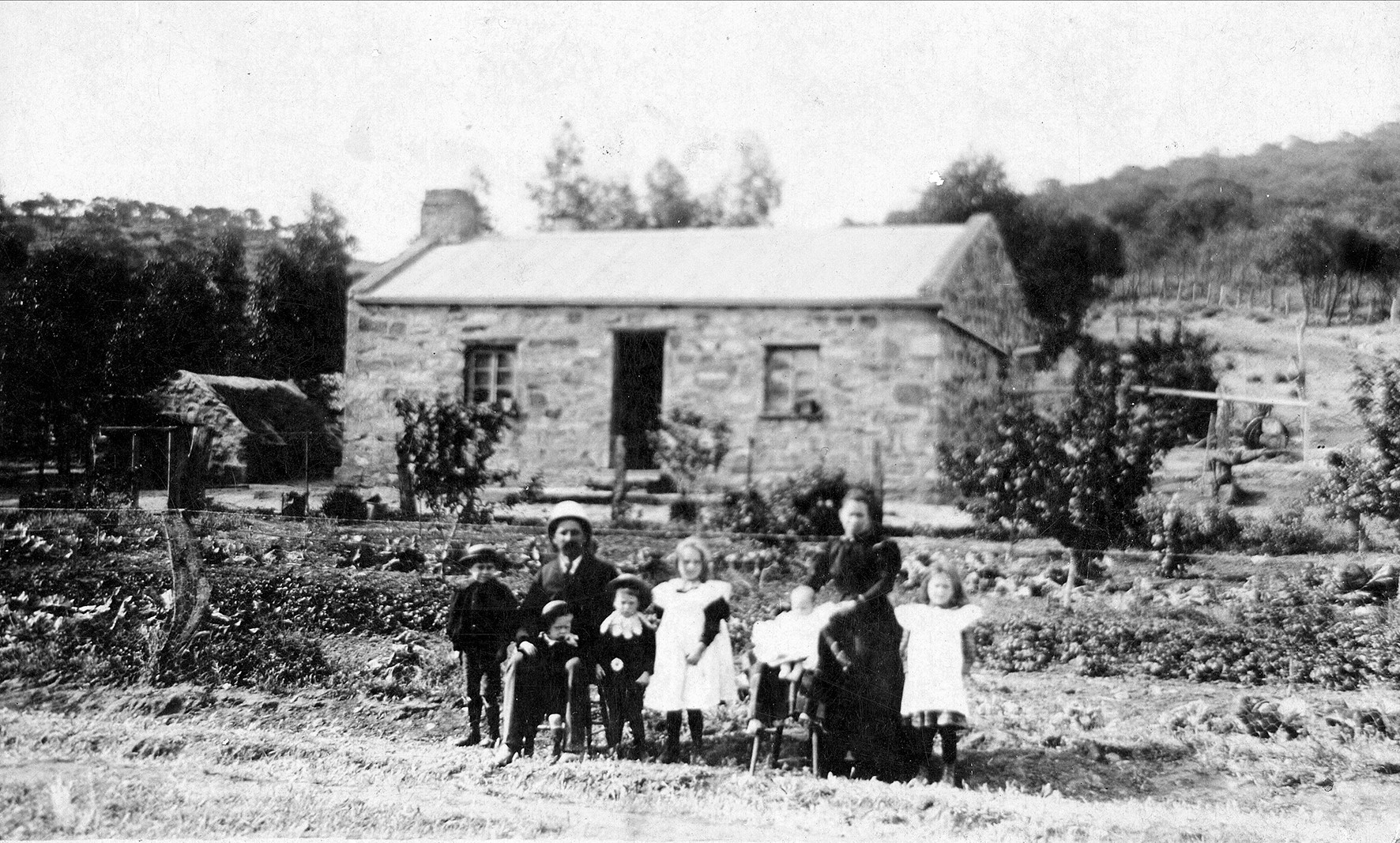
Flinders University experts are showcasing some of the oldest maritime mysteries as part of National Archaeology Week.
Along with a series of events led by Flinders - including talks on Indigenous and space archaeology and a special exhibition of SA's early Irish settlers - Flinders University alumni and academic Dr James Hunter is giving a talk at the Australian National Maritime Museum (ANMM) in Darling Harbour, Sydney this week (23 May 2019).
Dr Hunter will outline the discovery last year by Flinders University maritime archaeology, SA Museum, volunteers and philanthropic supporters of the shipwreck site of the barque South Australia near Victor Harbor, south of Adelaide.
Lost at Rosetta Harbour at Victor in December 1837, the vessel is South Australia's oldest documented shipwreck.
Its significance also derives from its use as one of the earliest immigration ships to ferry European settlers to the colony of South Australia, as well as careers as a postal packet and 'cutting-in' vessel for shore-based whaling activities.
The 'Maritime Archaeology Mysteries' talk will discuss the effort to locate South Australian, as well as archaeological fieldwork that has taken place at the wreck site subsequent to its discovery.
Dr Hunter, who is curator at the RAN Maritime Archaeology at the ANMM, has also been involved in research in the USA to confirm the final resting place of one of the first European ships to arrive in Australia, the HMB Endeavour.
Research indicates that Lieutenant James Cook's ship, renamed the Lord Sandwich, was scuttled alongside 12 other vessels in Newport Harbour during the American War of Independence in 1778.
Meanwhile, in New Zealand, Flinders University PhD candidate Kurt Bennett is investigating a 3m timber plank believed to be from the historic HMS Buffalo.
The former naval ship, repurposed to bring some of the first European settlers to South Australia in 1836, was later shipwrecked in New Zealand. The copper-sheathed plank timber plank was found on the beach near the Mercury Bay Museum at Whitianga, NZ, where Mr Bennett was doing some research for his thesis.
HMS Buffalo was built in India in 1813 and after several years transporting people around the world, it was primarily used in the timber trade, Mr Bennett says.

"On 28 July 1840, HMS Buffalo anchored in Mercury Bay and loaded with kauri was caught in a storm and shipwrecked in a nearby beach, which is now known as Buffalo Beach," Mr Bennett says.
"The timber measures approximately three metres in length by 25 millimetres thick and also has evidence of metal sheathing and pitch or tar.
"The function of the timber was identified as a possible sacrificial wood plank with copper sheathing used on the outside of the hull.
Importantly, this plank is similar to other timbers held in the Buffalo collection at the Mercury Bay Museum and appears consistent with other archaeological studies concerning similar types of vessels."
The shipwreck site is protected under the Heritage New Zealand Pouhere Taonga Act 2014.
Along with this work on the Buffalo, Mr Bennett is also investigating the remains of NZ's oldest ship named Endeavour which dates to 1795. It is the wreck of an English ship build in India (of teak).







